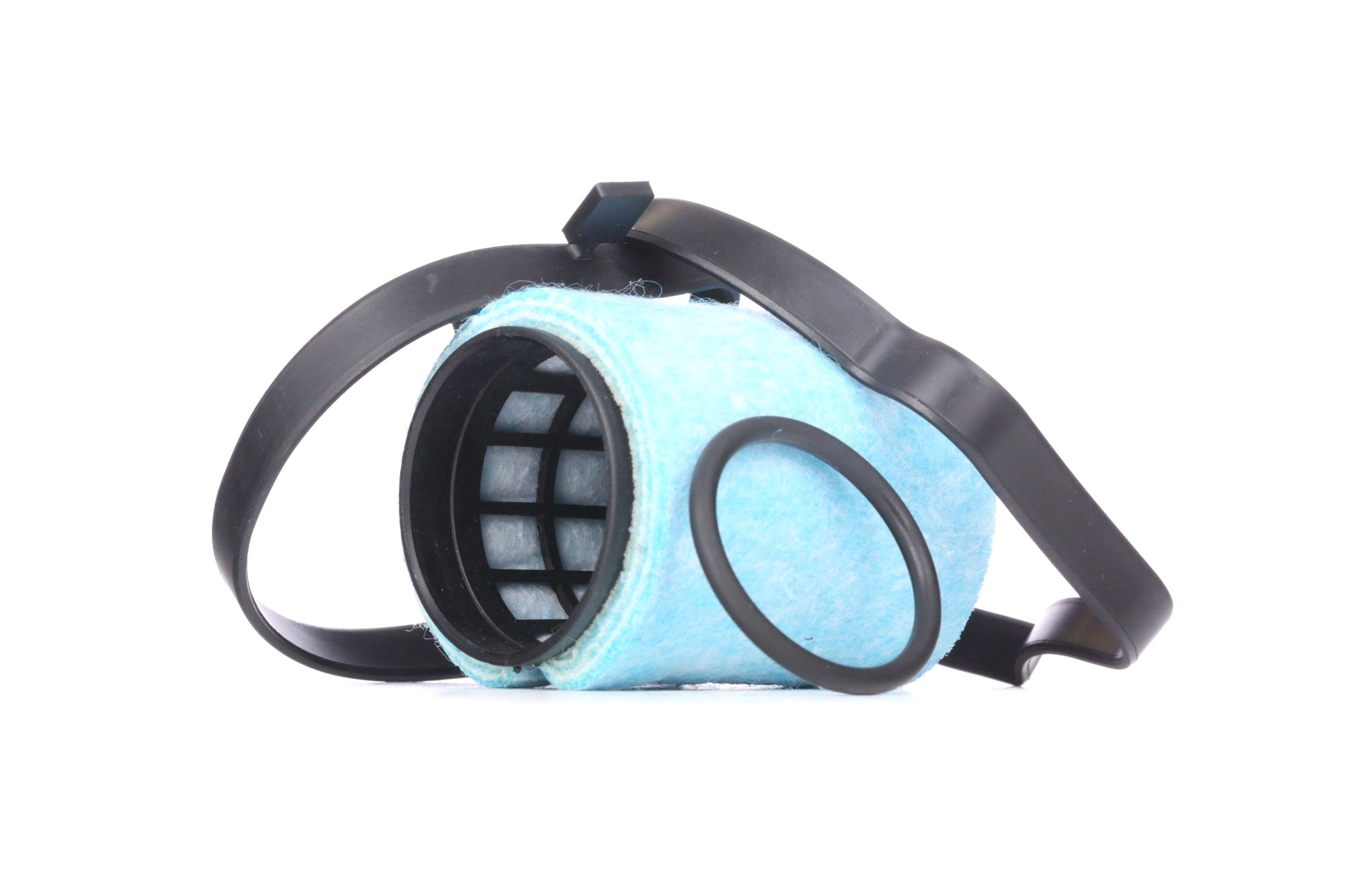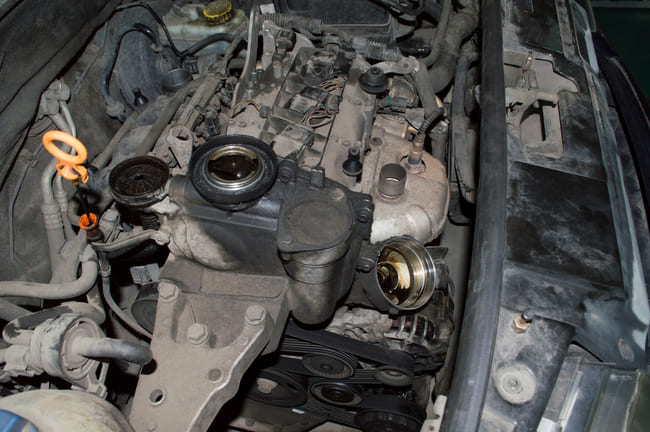Table of Contents
BMW E46 PCV System Problems: Why Your Car is Leaking Oil and What to Do About It
If you own a BMW E46 (1999-2006), chances are you've either experienced or will experience the dreaded PCV system failure. This isn't just another minor inconvenience – it's a well-documented design flaw that affects virtually every E46 with the M54 engine. Understanding this problem could save you from costly engine damage and frustrating breakdowns.
What Exactly Goes Wrong with the E46's PCV System?
The Positive Crankcase Ventilation (PCV) system, also known as the Crankcase Controlled Ventilation (CCV) system in BMW terminology, is designed to manage harmful gases produced during combustion. In a properly functioning system, these gases are recycled back through the engine rather than building up pressure in the crankcase. For a detailed explanation of how PCV systems work across different vehicle types, understanding the basic principles can help diagnose problems more effectively.
However, BMW's original design has several critical weaknesses. The system consists of multiple vacuum hoses, an oil separator, and the main CCV valve itself, all tucked away underneath the intake manifold where they're exposed to extreme temperature changes and oil vapours.
AUTODOC technical team advises that the most problematic aspect is the system's vulnerability to moisture accumulation, particularly in colder climates. When moisture freezes within the valve or drain-back hoses, it creates blockages that can lead to catastrophic pressure build-up.
 RIDEX Valve, engine block breather
with gaskets/seals
RIDEX Valve, engine block breather
with gaskets/seals
 RIDEX Valve, engine block breather
with gaskets/seals
RIDEX Valve, engine block breather
with gaskets/seals
 RIDEX Valve, engine block breather
Breather Valve, engine sided, with seal ring
RIDEX Valve, engine block breather
Breather Valve, engine sided, with seal ring
 RIDEX Valve, engine block breather
with seal ring, with filter
RIDEX Valve, engine block breather
with seal ring, with filter
 RIDEX Valve, engine block breather
RIDEX Valve, engine block breather
Root Causes: Why This Problem is Almost Inevitable
The E46's PCV system fails due to a combination of design flaws and operating conditions:
Material degradation occurs as the plastic components and rubber hoses become brittle over time. The constant exposure to oil vapours, heat cycling, and engine vibration causes these parts to crack and fail.
Moisture-related issues are particularly problematic for drivers who make frequent short trips. When the engine doesn't reach full operating temperature regularly, condensation builds up in the system and can freeze during cold weather, blocking critical pathways.
Oil sludge accumulation happens gradually as blow-by gases carry oil particles through the system. Over time, this creates a thick, gooey substance that clogs the narrow passages in the CCV valve and drain-back hoses.
When Does This Problem Strike?
Most E46 owners encounter PCV system issues between 60,000 and 120,000 miles, though some experience problems much earlier. The failure pattern typically follows these scenarios:
| Driving Pattern | Risk Level | Typical Mileage |
| Frequent short trips in cold weather | Very High | 60,000-80,000 miles |
| Mixed city/motorway driving | Moderate | 80,000-120,000 miles |
| Primarily long-distance driving | Lower | 100,000+ miles |
According to AUTODOC experts, vehicles used predominantly for short urban journeys in cold climates are most at risk, as the engine rarely reaches the temperatures needed to evaporate accumulated moisture.
Recognising the Warning Signs

The symptoms of PCV system failure can range from subtle to dramatic:
Early warning signs:
- Slight increase in oil consumption
- "Mayo-like" residue on the oil filler cap
- Rough idling, particularly when cold
- Check engine light illumination
Advanced symptoms:
- Significant oil leaks from valve cover gasket
- Black or white smoke from exhaust
- Engine misfiring or hesitation
- Oil puddles forming under the car
- Whistling or hissing noises from the engine bay
In severe cases, a completely blocked system can cause such extreme pressure build-up that it blows out gaskets or, in the worst-case scenario, causes engine hydro-lock – a condition that can destroy your engine entirely.
Your Options for Fixing the Problem
When facing PCV system failure, you have several repair approaches:
Complete system replacement is the most thorough solution. This involves replacing the CCV valve, all associated hoses, and the dipstick tube. BMW released an improved "cold weather" version of these components that includes insulation to prevent freezing. When sourcing replacement parts, ensure you're getting components specifically designed for your E46 model, as BMW E46 PCV valves vary depending on engine type and production year.
Aftermarket upgrade systems offer enhanced reliability over the original BMW design. These systems typically relocate critical components to more accessible locations and use materials better suited to the harsh operating environment.
Temporary fixes such as cleaning existing components or replacing individual hoses may provide short-term relief but rarely address the underlying problems permanently.
 FEBI BILSTEIN Valve, engine block breather
with fastening/mounting material
FEBI BILSTEIN Valve, engine block breather
with fastening/mounting material
 MEYLE Valve, engine block breather
with gasket/seal, ORIGINAL Quality
MEYLE Valve, engine block breather
with gasket/seal, ORIGINAL Quality

 VAICO Repair Set, crankcase breather
Cylinder Head, with hose
VAICO Repair Set, crankcase breather
Cylinder Head, with hose
 GATES Crankcase breather hose
GATES Crankcase breather hose
Can You Tackle This Repair Yourself?
The PCV system replacement is challenging but achievable for mechanically inclined DIY enthusiasts. However, it's not a weekend warrior project.
Tools required:
- Torx bits (T25, T27, T40)
- Socket set (6mm, 10mm, 13mm)
- Small inspection mirror
- Hose removal tools
Skill level needed: Intermediate to advanced. The repair requires removing multiple engine components including the air intake system, throttle body, and various sensors.
Time investment: Expect 4-8 hours for a first-time DIY attempt, depending on your experience level.
Cost comparison:
| Repair Option | Parts Cost | Labour Cost | Total Cost |
| DIY with OEM parts | £150-250 | £0 | £150-250 |
| DIY with upgraded kit | £300-500 | £0 | £300-500 |
| Professional repair | £150-250 | £400-600 | £550-850 |
The main challenge lies in accessing the CCV valve, which sits underneath the intake manifold. Many components must be removed to reach it, and the vacuum hoses often disintegrate during removal, making replacement inevitable.
The Bottom Line
The BMW E46 PCV system failure is not a matter of "if" but "when." This design flaw affects virtually every E46 with the M54 engine, making it one of the most predictable maintenance items for these vehicles. While the repair is complex and somewhat costly, addressing it promptly prevents far more expensive engine damage. Whether you choose DIY repair or professional service, upgrading to improved components will provide better long-term reliability than simply replacing like-for-like with original BMW parts.

Frequently Asked Questions (FAQ)
Q: How do I know if my E46's PCV system has failed?
A: The most common early signs are increased oil consumption, rough idling, and a creamy residue on the oil filler cap. More severe symptoms include oil leaks, exhaust smoke, and engine misfiring. A simple test is to remove the oil filler cap while the engine is running – excessive suction indicates a problem.
Q: Can I drive my E46 with a failed PCV system?
A: Driving with a completely blocked PCV system is risky and can cause severe engine damage. If you notice symptoms, limit driving to essential journeys only and arrange repairs as soon as possible. In cold weather, a frozen PCV system can cause catastrophic engine failure.
Q: Why does BMW's "cold weather" kit solve the problem?
A: The cold weather kit includes insulated components and a redesigned dipstick tube that's less prone to clogging. The insulation helps prevent moisture from freezing within the system, while the improved dipstick tube design allows better drainage of accumulated oil.
Q: Is it worth upgrading to an aftermarket PCV system?
A: Aftermarket upgrade systems often provide superior reliability compared to BMW's original design. They typically relocate components to more accessible locations and use better materials. While more expensive initially, they can offer better long-term value through improved durability and easier maintenance.
Q: How often should the PCV system be inspected on an E46?
A: Given the known issues with this system, annual inspection is advisable, particularly for vehicles approaching 60,000 miles or those used primarily for short trips in cold climates. Regular checks can catch problems early before they cause expensive secondary damage to engine seals and gaskets.










